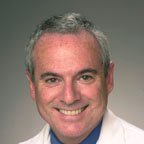What to do with your doctor cash cows?

A recent report from Merritt Hawkins indicated that the average employed physician generates over $1.5M to their employer. Also, while there is a lot of noise about value based and bundled payment, the reality in the examining room is  “the healthcare environment remains solidly rooted in fee-for-service and other forms of volume-based reimbursement. According to a recent Health Affairs study, 94.7% of physician office visits were covered under fee-for-service arrangements, and just 5.3% under capitation payments.”In other words, docs have one foot in the boat and another on the dock.
In addition, entrepreneurs are creating new care delivery models, like urgent care clinics, new forms of primary care practices and retail based clinics and they are looking for ways to attract and compensate docs, particularly primary care docs, in ways that are both motivating and legal and not run afoul of Stark Laws.
Health systems leaders are trying to figure out how to manage clinical staffing and variation.As noted, Â it is essential to address how the health system manages its clinicians, particularly physicians. This has been an area of explosive cost growth in the past 15 years as the number of physicians employed by hospitals has nearly doubled. In addition to paying physicians the salaries stipulated in their contracts, hospitals have been augmenting their compensation (e.g., by paying them extra for part-time administrative work and being on call after hours and by giving them dividends from joint ventures in areas such as imaging and outpatient surgery where the hospital bears most of the risk).
There is nothing simple about physician employment agreements when multiple federal agencies are watching over them. Here are 10 legal and regulatory landmines.
Furthermore, those doctors that generate the most don’t necessarily get paid the most, given that some specialists generate lots of downstream revenue in the form or tests, imaging studies and procedures, while other specialists generate less. In some instances, doctors generate almost 20x their salaries.
What to do with the doctor cash cows will continue to trouble sick care CFOs for the forseeable future. Revenue sharing, ESOPS ,delayed compensation and other forms of incentives, because of the nature of sickcare, rules and regulations or stock options will probably not be viable options.
Here are 10 reasons why it is so hard to kill fee for service (FFS) medicine:
- Too many people make too much money doing it that way.
- Politicians are afraid of enacting too much change too soon.
- Entire industries, like EMR, CPT coding, and others have been built around optimizing the fee for service model.
- Some would claim it would be like other “socialist” countries with more government power.
- Many are wary of how the payment negotiations would play out and the end result.
- Some want to get rid of third-party payment altogether and this is just making a bad system worse.
- Many think “value” is a smoke screen and a ploy to pay providers less.
- Pay for performance is not working.
- Some stress that patients should decide what they want and how much they should pay for it and not be forced into a “panel” of patients.
- There’s a presidential election campaign going on.
As we change more from sick care to health care and we see a gradual, real transition to bundled payments via MACRA, there will also be a MOO-vement to do something with the doctor cash cows.
Image Credit: Pixabay
Wait! Before you go…
Choose how you want the latest innovation content delivered to you:
- Daily — RSS Feed — Email — Twitter — Facebook — Linkedin Today
- Weekly — Email Newsletter — Free Magazine — Linkedin Group
 Arlen Meyers, MD, MBA is the President and CEO of the Society of Physician Entrepreneurs at www.sopenet.org and co-editor of Digital Health Entrepreneurship
Arlen Meyers, MD, MBA is the President and CEO of the Society of Physician Entrepreneurs at www.sopenet.org and co-editor of Digital Health Entrepreneurship
NEVER MISS ANOTHER NEWSLETTER!
LATEST BLOGS
How Brexit Has Affected UK E-commerce Businesses
Photo by Zyro on Unsplash The popularity of online shopping was already growing at an impressive rate – and…
Read MoreOvercoming range anxiety: three tips for EV owners
Photo by Jenny Ueberberg on Unsplash In the last few years, electric vehicles (EVs) have become more and more…
Read More


